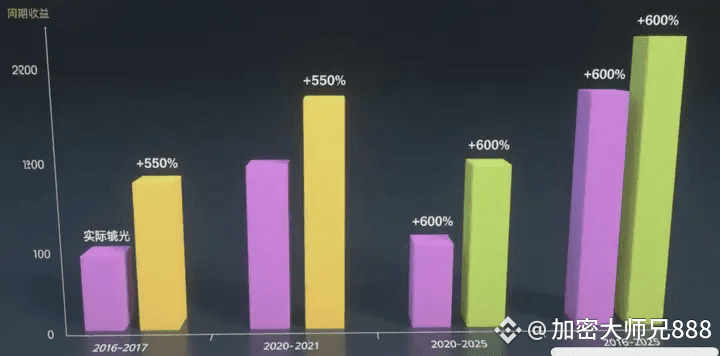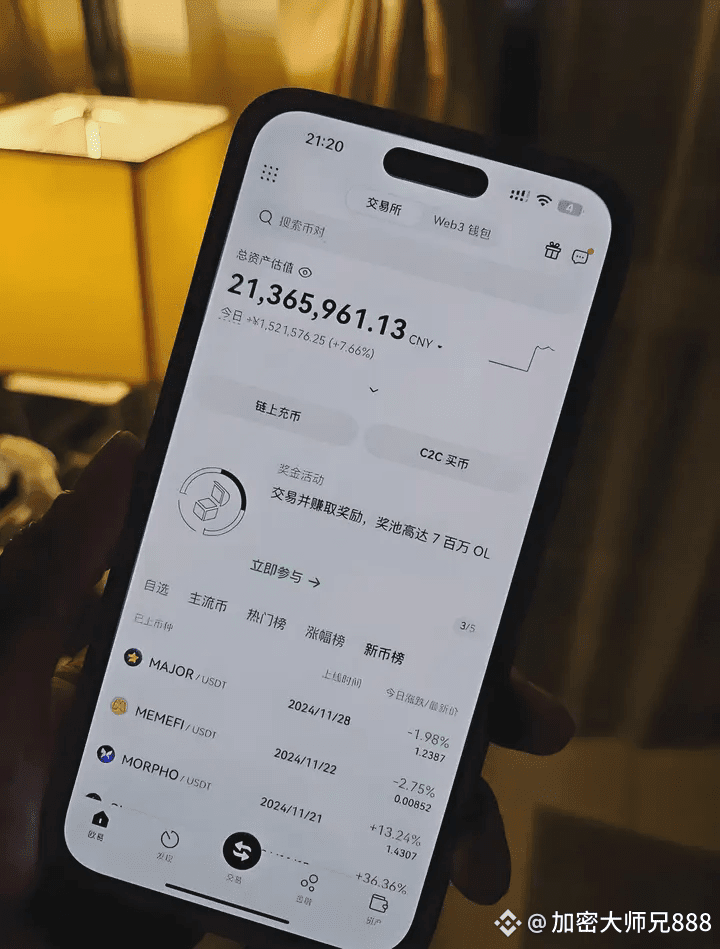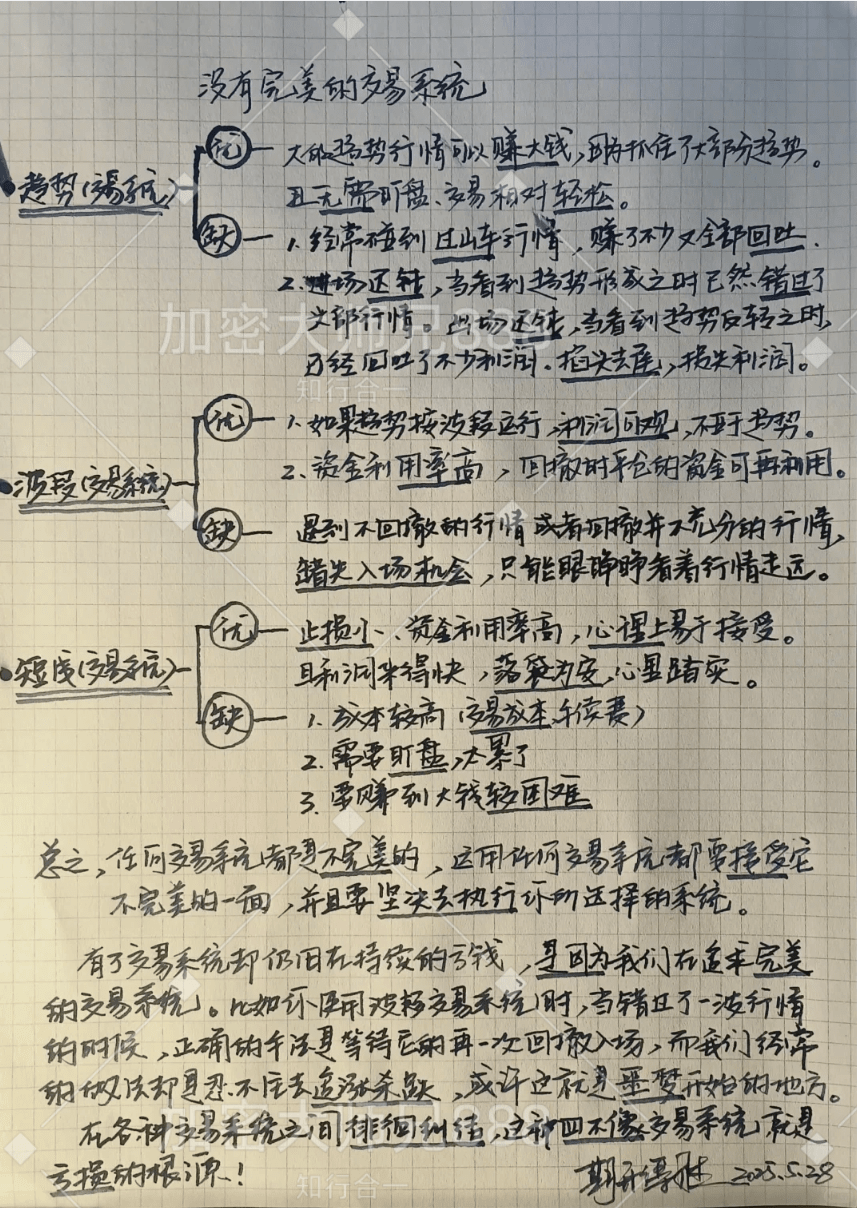In the field of cryptocurrency, I have been deeply involved for 10 years. Six years ago, I made the bold decision to resign and devote myself wholeheartedly to this wave of digital finance.
From having nothing to achieving financial freedom, my life trajectory was completely rewritten one night five years ago. That night, the heartfelt words of a senior mentor resonated with me, clarifying my positioning and deeply understanding the eight stages that every crypto investor must go through. I reflected on these stages, and eventually regained everything I had lost! Perhaps in the eyes of the public, retail investors are always the weaker party, like fish on a cutting board.
If you are standing hesitantly at the threshold of the crypto world, I sincerely hope my sharing can light a lamp for you. I believe I have some summarizing and expressing abilities, hoping my experiences and insights can provide you with valuable references. Back to the point, let's get straight to the topic!
For ordinary investors, the threshold to enter the crypto space is not high. To say nothing more, taking out 20,000 yuan is something most people can do. From a time perspective, excluding those early players who got in due to first-mover advantages, if we calculate based on the time points that ordinary people can understand and grasp, Bitcoin (BTC) has gone through 4 complete cycles from 2016 to now. During each cycle, Bitcoin has consistently shown a 3-6 fold increase. Of course, in actual operations, it's difficult to accurately buy at the absolute bottom or sell at the absolute top, so we might as well conservatively estimate a 4-fold increase. Thus, after 4 cycles, the initial 20,000 yuan could turn into: 20000×4×4×4×4 = 5,120,000 yuan. If the initial capital is 50,000, after 4 cycles, this number will become: 50000×4×4×4×4 = 12,800,000 yuan. These numbers intuitively demonstrate the enormous wealth potential inherent in the crypto space, sufficient to allow an ordinary person to achieve a turnaround.
However, in the crypto space, filled with opportunities and challenges, if you want to truly achieve financial freedom and build a compound growth wealth model, mastering the correct methods, exquisite techniques, and forming an effective profit system is crucial. Once you learn and master these key elements, the crypto world can become like your exclusive 'ATM', making money as natural and simple as breathing. But this is by no means instantaneous; it requires continuous learning, practice, summarization, and optimization. Next, I will share my valuable experiences and specific strategies accumulated over more than 10 years of trading without reservation.
I. My Wealth Growth Journey
On my path of wealth accumulation, the acquisition of the first ten million took the longest time and was the most painful process. At that time, I continuously reshaped and refined my trading system, exploring repeatedly through market fluctuations. This stage took me a whole year and a half. During this process, I experienced countless tests of market volatility, and each trade's success or failure became a key basis for optimizing my trading system. I delved into studying various technical indicators, market trends, and macroeconomic factors affecting cryptocurrency prices, constantly adjusting my trading strategies and risk control methods.
The accumulation speed of the second ten million clearly accelerated, taking only three months. This is thanks to my meticulous refinement of the trading system in the first stage, making it gradually mature and stable. At this point, my understanding of the market deepened, allowing me to more accurately grasp trading opportunities, decisively entering and exiting at appropriate levels, thus achieving rapid growth of funds.
By the time I accumulated my third ten million, the required time further shortened to just 40 days. With the continuous enrichment of trading experience and ongoing optimization of the trading system, my sensitivity and judgment of the market reached a new height. I was able to quickly capture fleeting opportunities in the market and, with proficient trading skills and strict discipline execution, efficiently increased my capital.
What’s most astonishing is that the accumulation of the fourth ten million only took 5 days. At this stage, my trading system had reached a high level, and I grasped the market rhythm perfectly. At the same time, I closely monitored market dynamics and could flexibly adjust trading strategies based on market changes, seizing some explosive market trends, achieving geometric growth in funds. Looking back at the process, 75% of my funds were earned within half a year. This fully proves that a mature and effective trading system, combined with keen market insight and decisive execution, can create astonishing wealth miracles in the crypto space.

II. Optimal Contract Strategy with 300U Capital (Efficient Margin Scheme)
(I) Starting Phase: 300U→1100U (3 Level Sprint)
Strategy: Use a divided warehouse operation, splitting 300U into 3 parts of 100U each, trading with 10x leverage each time. Set a 7% profit target and a 5% stop-loss line, achieving a risk-reward ratio of 1.4:1 while pursuing returns and reasonably controlling risks.
Execution Steps:
Level 1 (100U→200U): The target is to profit 70U; when profits reach 7% (i.e., 70U), take profits and exit to enter the next level; if losses reach 5% (i.e., -50U), stop-loss and exit, leaving 200U remaining, and adjust strategies before continuing operations.
Level 2 (200U→400U): The target profit at this stage is 140U; similarly, take profits when the target is reached, and if losses reach 100U (i.e., 50% loss), stop-loss, leaving 100U as the base capital.
Level 3 (400U→800U): Target profit of 280U; if successful, the capital will reach 1100U, at which point one can enter the next stage of stable strategies.
Key Discipline: During the entire starting phase, the maximum number of trades is 3. Regardless of the results of these 3 trades, subsequent trades should adopt a conservative approach and only trade Bitcoin (BTC) and Ethereum (ETH), firmly refusing to engage in altcoin trading. This is because the altcoin market often has poor liquidity and is easily manipulated by large players, with a high risk of spikes that can lead to huge losses with just a small mistake.
(II) 1100U Phase: Three-dimensional Matrix Strategy (Ultra-Short + Swing + Trend)
Capital Allocation:
Ultra-Short Order (300U): Used for day trading, pursuing quick entries and exits to capture profits from short-term market fluctuations.
Swing Order (500U): Using a 4-hour level for trading cycles, combined with profit situations for Bitcoin dollar-cost averaging, aiming to grasp the mid-term market trend.
Trend Order (200U): Specifically used to target large weekly-level market opportunities and layout long-term trends.
Emergency Fund (100U): Used as emergency funds for averaging down or seizing sudden market opportunities.
Ultra-Short Order (300U, Day Trading)
Strategy: Use 10x leverage, relying on EMA12 + MACD + (5,13,1) technical indicators as entry signals. Specifically, decisively enter when the 15-minute K-line breaks through the highs of the previous 3 K-lines with increased volume.
Take Profit and Stop Loss: Set a 3% - 5% profit target and flexibly move the stop-loss according to market conditions to protect profits. If losses reach 2%, a mandatory stop-loss should be initiated.
Circuit Breaker Mechanism: If there are two consecutive losing trades, pause trading for 1 hour to calmly analyze the market and trading strategy, avoiding blind operations that could lead to greater losses.
Swing Order (500U, 4-hour level)
Strategy: Use 5x leverage, taking the Bollinger Bands indicator as an important reference. Go long when the 4-hour Bollinger Band width shrinks to less than 20% of the yearly line, and the price breaks through the upper Bollinger Band; conversely, go short when the price breaks through the lower Bollinger Band.
Stop-Loss and Profit Handling: Set stop-loss at 1.5 times the bandwidth to control risk. If weekly profits reach 40%, invest the profit portion into Bitcoin for long-term asset appreciation.
Trend Order (200U, Weekly Opportunity)
Strategy: Use 3x leverage, patiently waiting for extreme market conditions. When the weekly RSI + (14) indicator is less than 30 (oversold) or greater than 70 (overbought), and the daily chart shows three consecutive K-lines in the same direction, and the 4-hour TD sequence shows a reversal signal (e.g., TD sequence = 9), decisively enter.
Take Profit: Use a trailing stop-loss strategy to ensure the risk-reward ratio is greater than or equal to 3:1, maximizing profits in trending markets.
(III) Ultimate Risk Control (Life and Death Line)
Daily Loss Control: Once daily losses exceed 15% of total funds, a 24-hour mandatory break must be observed to avoid continuing trading in an emotionally uncontrolled state, leading to greater losses. During this 24 hours, calmly review and analyze the reasons for the losses and adjust trading strategies.
Weekly Profit Management: If weekly profits exceed 30%, halve the trading leverage the next day to reduce risk and consolidate profit results. This is to prevent overlooking potential risks due to excessive pursuit of high returns, ensuring steady growth of funds.
Monthly Profit Withdrawal: Withdraw 20% of profits each month to secure them. This can effectively avoid profit retracement caused by sudden market reversals and allow oneself to tangibly feel the returns on investment, enhancing investment confidence.
(IV) Summary
Throughout the trading process, the initial three-level sprint stage (100U x 3 times) aimed to quickly accumulate capital as a foundation for future trading. Once entering the 1100U stage, a three-dimensional matrix strategy combining ultra-short, swing, and trend trading was adopted to comprehensively capture opportunities from various market cycles, achieving steady growth of funds. At the same time, always remember that discipline is greater than technique. Firmly refuse to hold losses and frequent trading. Holding losses often leads to continuous widening of losses, and frequent trading not only increases transaction costs but also easily causes one to get lost in the market's short-term fluctuations. Only by strictly adhering to trading discipline can one pursue high returns while effectively controlling risks in the high-risk, high-reward crypto market. This plan is particularly suitable for players starting from 300U.
III. Special Considerations
Trading Variety Selection: Focus solely on high buy-low sell trading of Bitcoin (BTC) and Ethereum (ETH). These two mainstream digital currencies have large market scales, strong liquidity, and relatively high stability, making them more suitable for long-term investment and trading compared to other altcoins.
Short Order Entry Timing Judgment: Mainly based on important resistance moving average groups at the 4H level and above to determine the timing for batch entry of short positions. For example, when the MA60 moving average above the 4H level consistently suppresses the price, this moving average can be used as a reference for entering short positions. Set the stop-loss at the previous high position after a price spike followed by a drop. Assuming resistance is at 2440 and the price spikes to 2450, then the stop-loss should be set above 2450 to prevent unnecessary losses from false breakouts after the price breaks through the resistance level.
Long Entry Timing Judgment: Generally use the support level at the same or a higher level as the point for entering long positions in batches. Set the stop-loss at the previous low after a downward spike followed by a rise. For example, if the support level is 2320 and the price spikes to 2310, the stop-loss can be set below 2310, around 2300, to control the risk of long positions.
Stop-Loss Capital Control: Set the daily stop-loss limit to 20% of total capital. Once this stop-loss limit is reached, no further trades should be opened that day. Daily operations generally focus on two trades, and single trade stop-loss should be strictly controlled within 10%, while ensuring that the size of the position remains consistent. This helps maintain trading consistency and stability, avoiding risk control issues due to improper position management.
Trading Operation Principles: Try to enter positions in batches, avoiding putting all funds into the market at once; do not 'load all bullets' at once. Follow market trends when opening positions; enter short positions when the market is neutral; conversely, when the market shows a bullish trend, enter long positions. Additionally, when the overall market trend is positive, consider chasing trending coins, but be cautious with risk management. Strictly control the risk-reward ratio, maintaining it around 3:1 to ensure profitability in long-term trading. Conduct daily reviews to summarize the day's gains and losses, analyze market trends, and provide references for future trades.
Response to Market Crashes: During market crashes, the best strategy is to stay out of the market and observe market dynamics. If there is an opportunity, you can enter in batches, but if there are no suitable opportunities, steadfastly remain out of the market. In such extreme conditions, not losing money is akin to making money, avoiding blind entries that could harm your capital.
Profit Protection Stop-Loss Settings: When the day's trading does not hit a stop-loss and the same level of K-line patterns does not show a breakdown, you can temporarily avoid setting a profit protection stop-loss, choosing to pursue greater profit potential. However, if either condition is not met, a profit protection stop-loss must be set. For Ethereum (ETH), set a profit protection stop-loss when profits reach 20 points; for Bitcoin (BTC), set it when profits reach 350 points to protect the profits gained.
Trailing Stop Profit Settings: For Ethereum (ETH), perform trailing stop profit operations when profits reach 35 points, using 3/5 minute K-line charts to set trailing stop points, dynamically adjusting the stop-loss position based on market trends, ensuring that profits are protected while not missing potential gains. For Bitcoin (BTC), perform trailing stop profit when profits reach 500 points, similarly using 3/5 minute K-line charts as a reference for flexible stop-loss adjustments to maximize profits.
Trading Mindset and Discipline: Never harbor fantasies of hitting it big in one go; this gambling mentality can lead to total loss in the crypto world. Learn to stay out of the market when it is unclear or when there are no suitable opportunities; do not force trades. Try to avoid trades at night, as market liquidity is generally lower, leading to abnormal fluctuations. Also avoid trading on weekends, as there are usually fewer market news updates, leading to more chaotic price movements. After hitting a stop-loss, control your mindset; do not let emotions drive you into revenge trading. Calmly analyze the reasons, adjust your strategy, and then re-enter.
The above is the valuable experience and detailed trading strategies I have accumulated over more than 10 years of trading. I hope it can help many investors in the crypto space. But remember, the crypto market is full of uncertainties, and investment trading always carries risks. When referring to these strategies, be sure to combine them with your actual situation and operate cautiously.
If you are also a tech enthusiast and are dedicated to studying technical operations in the crypto space, you might consider following @加密大师兄888 ; you will gain more!

